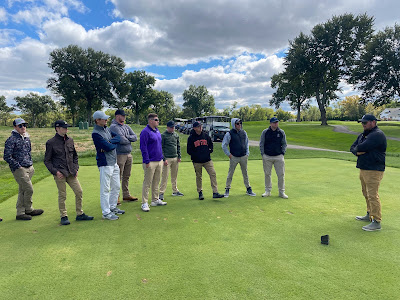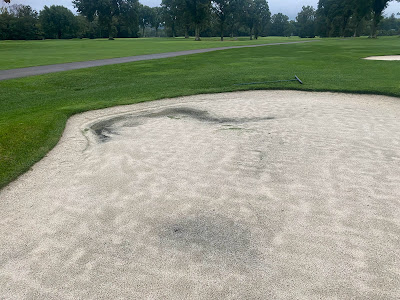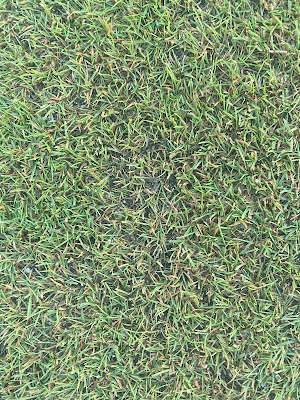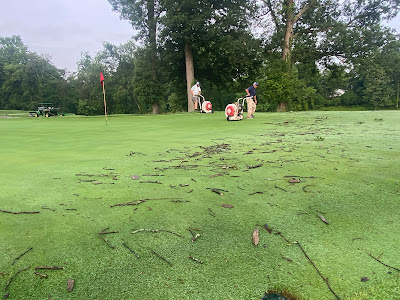The first sign that the seasons are changing is when the the Turfgrass Interns make their way back to school. This year marks our 19th season of having an internship program at HP, over 40 interns from 10 different countries been part of this diverse team, many of which have filled leadership roles within our department once they have completed their studies.
This year we were very fortunate to have two great people: Joe Faulks, and Austin Montgomery. Joe will be finished in early October while Austin completed his internship requirements last week.
Intern Spotlight: Austin Montgomery
Hello, my name is Austin Montgomery and I am from Knoxville, Tennessee. I chose to come to Hyde Park after listening to a presentation from Pat in one of my classes at the University of Tennessee. Even though, I am fairly new to turf management, working in the field for a little over a year now, I know it is the career path that I want to follow. The people are amazing and the job requires a lot of hard work but always feels worth it in the end. I plan on graduating this coming spring with a degree in Turf Management.
I have had a great time at Hyde Park and am very thankful for all that Pat and the rest of the team has taught me. This being only the second course I have worked on (and a much larger one at that) I arrived wide eyed and nervous, but now I am much more confident in all my abilities regarding turf. I have also had a great time working with people from different places and cultures. Whether, it was our great H2B workers from Mexico, Joe the other intern from England, or even seeing the differences between the people from here and the ones back home in Tennessee, they have all taught me a great deal.
I would like to thank everyone at Hyde Park for helping learn more about turf management and helping me have a great stay in the wonderful city of Cincinnati. I would also like to thank Pat, Arron and the leadership team for teaching me so much and also being flexible with my Marine Corps reserves schedule. I hope I am able to cross paths with all of you in the future!
Thank-you,
Austin Montgomery,
Turgrass Intern 2022
Primary Rough:
The work on the course continues with most of the questions centered around the inconsistent grass types in the rough. Last update I glazed upon the topic discussing that undesirable grasses such as Poa Annua, Creeping Bentgrass along with poor drainage were causing the inconsistency. Both of these undesirable grasses offer poor heat tolerance, disease resistance, requiring increased inputs of fertilizer, fungicides and water. Playability is poor at best with less than desirable ball lies.
To highlight the high populations of Creeping Bentgrass and Poa Annua in the rough we applied a selective herbicide in the rough infront of #15. This herbicide when applied will turn the undesirable grasses white and not impact the Tall Fescue. As you can see from the pictures below, this hillside is over 80 percent undesirable Creeping bentgrass/ Poa Annua. This area will be seeded this week with Tall fescue and we will see germination in 5 days or less.
 |
| #15-Prior to herbicide application |
 |
| #15-Bentgrass decline following herbicide application |
Green Surrounds:
On the 9th hole, the undesirable creeping bentgrass has been outlined with orange paint to highlight the large populations and the poor playability with the ball sitting deep in the "fluffy" creeping bentgrass.
 |
| Poor ball lie within bentgrass |
 |
| #9-Orange lines denote Bentgrass Contamination |
 |
| Bentgrass on surrounds becomes fluffy and scalps when mowed |
All of the green surrounds across the golf course are contaminated from the movement of the bentgrass from the greens to the green and bunker surrounds. To remedy this challenge in these areas, a long term strategy will need to employed utilizing herbicides and resodding the surrounds to Tall Fescue.
14th Green:
Unfortunately, the 14th green is slow to heal from the recent vandalism, we have increased fertilizer rates, reduced plant growth regulator use and utilized small coring tines to assist with regrowth. Our team will begin to integrate plugs of bentgrass in the larger damaged areas this week. I would like to thank the HP security team Les and Andrew with working with District 2 CPD and their continued investigation and follow-up. Also, the surrounding neighborhood has been very helpful with a watchful eye in the area. I am confident in a couple weeks the scars on the turf will be healed.
As always thanks for the feedback and questions on the course.
Thanks,
Pat O'Brien
Grounds Superintendent





















































